A Guide to Different Diamond Shapes
September 29th, 2019 / Alese Oldenburg
Today, there is an abundance of different diamond shapes to choose from, and each shape has its own unique style and brilliance. Deciding on the diamond shape is one of the most important factors of shopping for engagement rings or other pieces of fine jewelry. Whether you want matching wedding bands that complement your diamond engagement ring or you want your engagement ring to be the only ring you wear, your stone is the star of the show, and it needs to be everything you’ve dreamed of. Learn the pros and cons of each diamond shape to determine which one is right for you and guide you on the path of choosing a diamond.
What is Diamond Shape?
Diamond shape refers to the silhouette or general look of a stone. There are many different shapes available in the market today, but there are 11 shapes that are purchased most frequently. An important fact to note is that all shapes that are not a Round Brilliant are referred to as fancy shape diamonds. Each shape differs not only in physical form, but in light return as well. How much sparkle a stone emits is correlated with how many facets it has and its general pattern. While a Round Brilliant shape will emit the most amount of light return because of its ideal facet pattern, shapes like Emerald cut and Asscher cut diamond, which are step cuts, will not have as much sparkle but are appealing because of their unique style.

Purchasing lab grown diamonds or simulated diamonds whether for a piece of diamond jewelry or an engagement ring- is an important decision. It can sometimes be a big financial decision as well, which is why it’s so important to learn about diamond quality and how to choose the perfect stone. To figure out which diamond shape is right for you, first make sure that you are thoroughly acquainted with the most popular ones.
Diamond Shape vs. Diamond Cut
Before learning about each shaped diamond and how to choose stone shape, it’s important to differentiate diamond shape from cut. Diamond shape and diamond cut are often confused when choosing a diamond or diamond simulant. Hearing emerald cut diamond, round cut diamond, marquise cut and so on can make you think it’s referring to the shape. The cut of a diamond does not refer to the shape of the stone, but actually refers to how well a diamond’s facets interact with light. Cut is determined by measuring brightness, fire and scintillation. All three of these components have to do with the amount of sparkle the stone emits and how well it emits it. The closer a stone is to an Ideal Cut, the more sparkle it will emit and the more valuable a particular shaped diamond becomes.
Different Diamond Shapes
Narrow down your engagement ring search by choosing the perfect diamond shape. Of the 11 most popular shapes, each one looks and wears differently. To better determine which shape is the perfect diamond ring shape for you, learn the most important facts about each one.
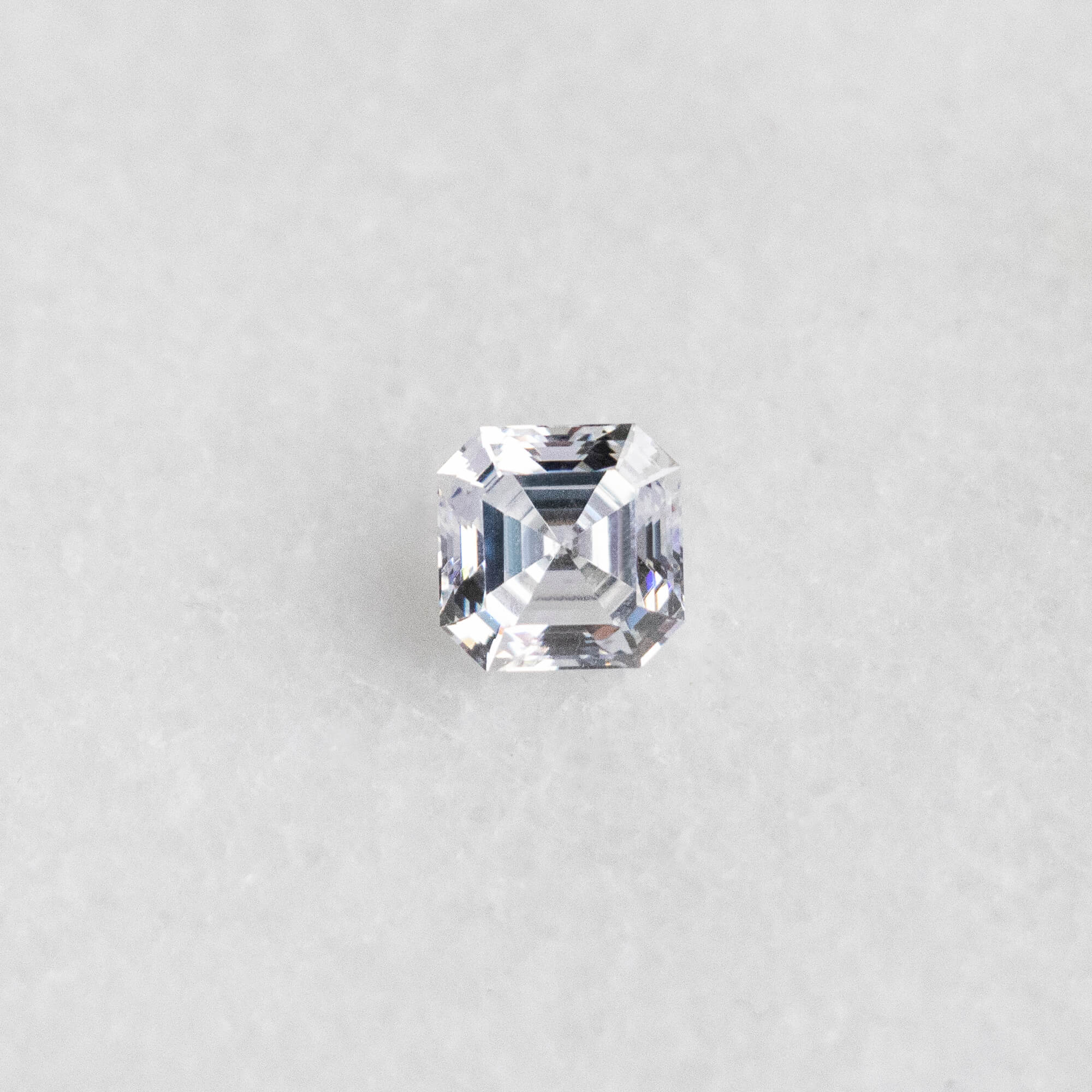
Asscher
An Asscher diamond is considered a fancy shape diamond (as are all shapes outside of a Round Brilliant). It’s very unique compared to other shapes in that it somewhat resembles the silhouette of a Princess stone but instead is considered a step cut. A step cut is a type of stone that has large, open facets that look like a staircase when viewed up close. Unlike a brilliant cut, it shows long flashes of sparkle. Asscher cut stones are sometimes referred to as a square Emerald shape, as they both feature 58 facets.
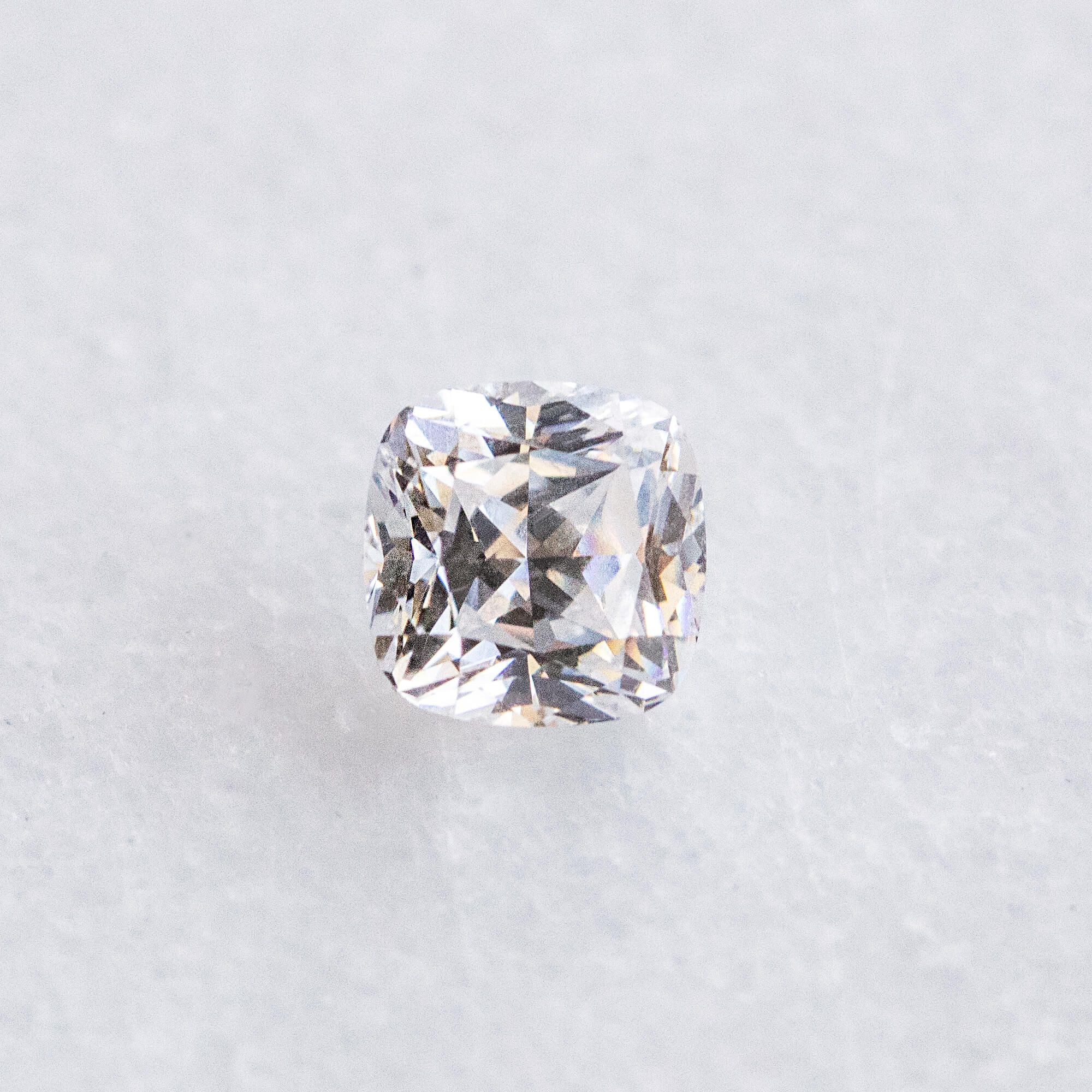
Cushion
A Cushion diamond resembles a pillow because of its rounded edges, making cushion cut engagement rings a beautiful alternative to a round or oval diamond. It is a cross between a Round Brilliant and a Princess- the two most classic shapes- making it a perfect choice for those who are looking for classic style with a modern twist. Although the exact number can differ, the average Cushion cut diamond or diamond simulant has around 58 facets. This gives it a similar appearance and light return pattern as a Round Brilliant cut, which could be one of the main reasons it is such a popular fancy shape diamond.
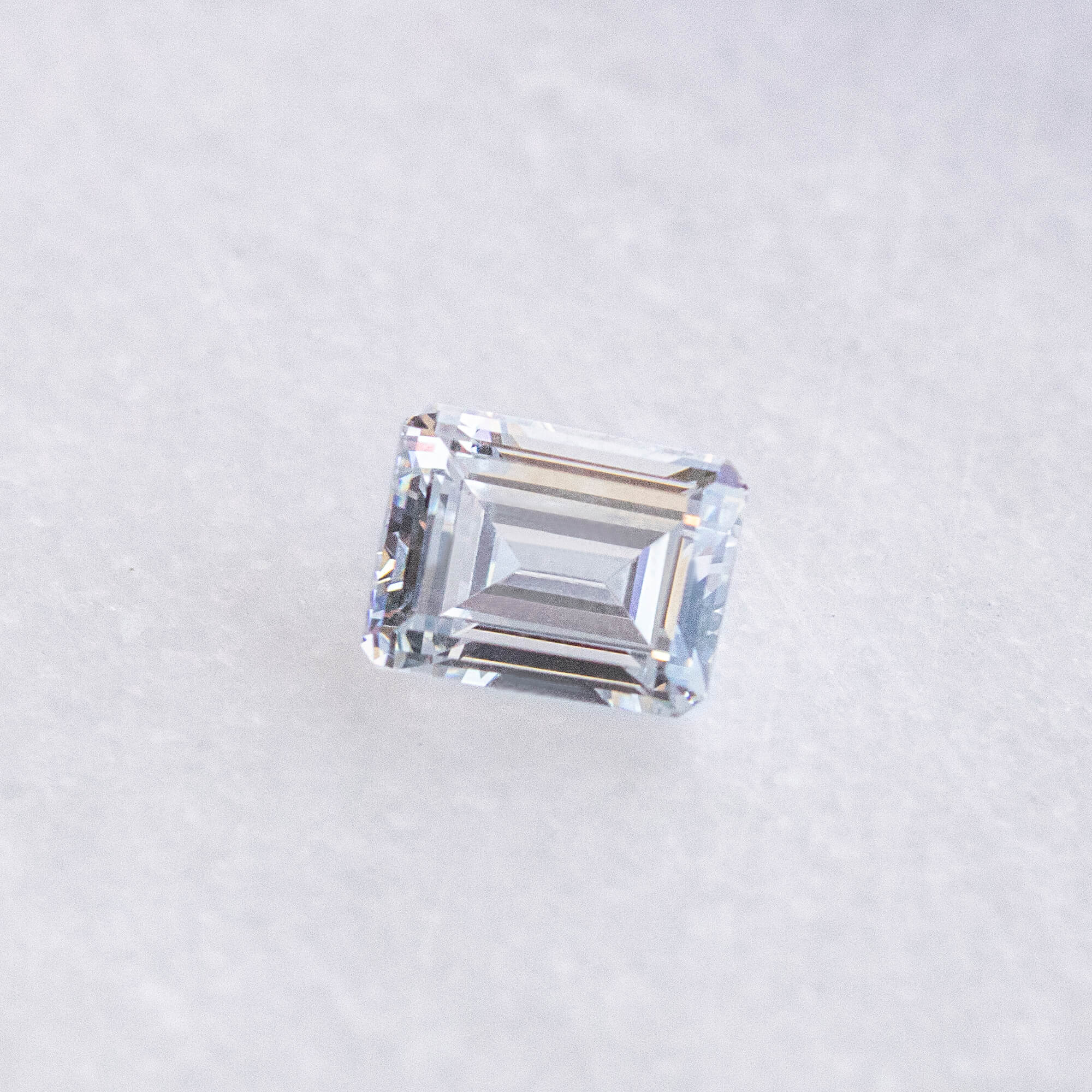
Emerald
The Emerald shape is often used in vintage diamond engagement ring designs as it was such a popular style during the Art-Deco movement in the 1920s. It is a rectangular shape that features slightly cropped edges and long open facets that make a captivating step-cut design. When looked at up close, you can see a dazzling hall-of-mirrors effect. Depending on the style you want, an Emerald shape can be cut to have a more square shape or elongated shape and rectangular shape. While this shape is unique and utterly captivating, keep in mind that since there are fewer facets featured on the table, inclusions are much more easily seen if you choose a traditional diamond.
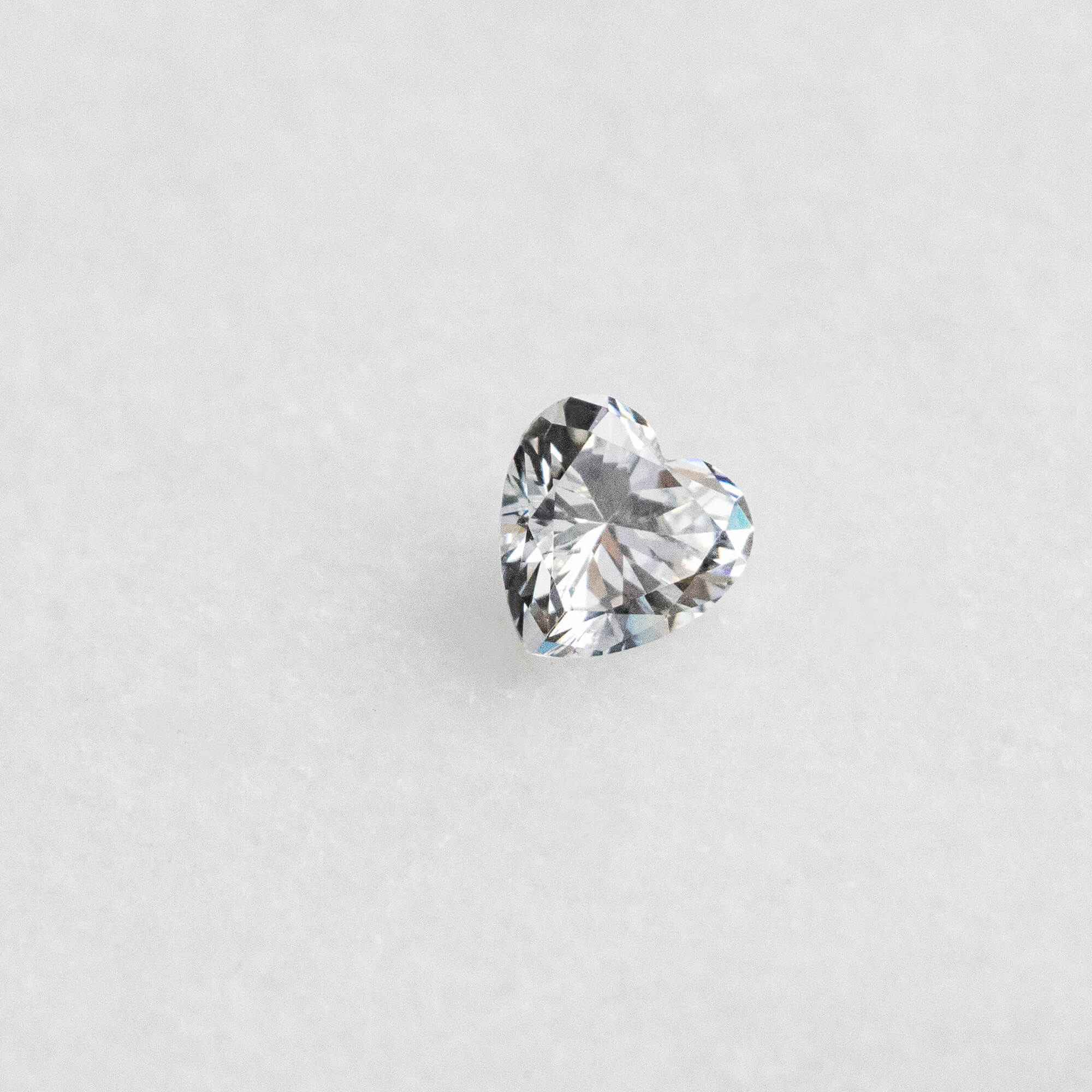
Heart
Of all diamond shapes, the Heart shaped diamond is by far the most romantic. It symbolizes true love and femininity. A Heart shaped diamond is usually designed as a solitaire, as it is so striking on its own. A Heart cut diamond usually features around 58 facets, although its pavilion may feature anywhere from 6 to 8 facets. Traditional diamonds featured in this Heart shape sometimes have a bow-tie effect, where it looks as though there is a dark spot in the stone because of a shadow being cast from the central facets. This is much less likely to occur with an Ideal Cut diamond or diamond simulant such as the Nexus Diamond™ alternative.

Marquise
Elongated and uniquely modern, the Marquise diamond shape is growing in popularity. It’s much different than all other shapes as it comes to two points at both ends. There are many reasons women choose a Marquise cut diamond, but the two most common are because it gives the appearance of a more slender finger along with appearing larger than it actually is. So a one carat Marquise diamond will appear larger than a one carat Round Brilliant because of its length.

Oval
An Oval shape resembles the simplicity of a Round Brilliant, but is elongated to create a more modern style. The Oval diamond shape is extremely popular, not only for its versatility, but because it tends to appear larger. Like other elongated shapes such as the Pear cut diamond and Marquise diamond, an Oval cut diamond will have a slenderizing effect on your finger when set in an engagement ring. The oval cut diamond is also a great choice for a solitaire design because it enhances the ring’s uniqueness, unlike a more traditional style.
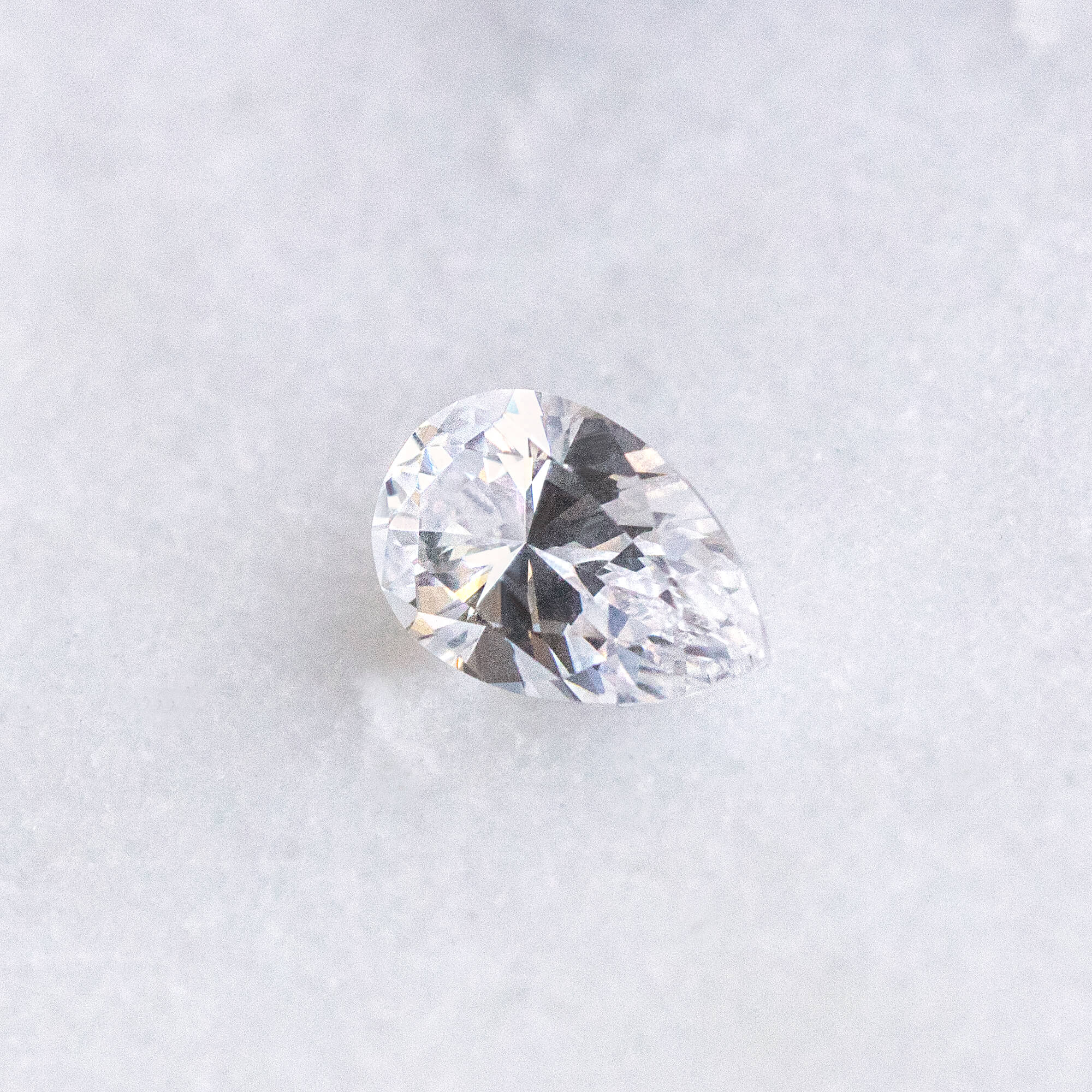
Pear
Pear shaped engagement rings also feature an elongated design that flatters the finger and appears larger. Although some choose to wear it differently, the pear shape traditionally worn pointing away from your hand when featured in an engagement ring. This lends the length throughout your finger. Pear shaped diamonds and diamond alternatives are extremely modern, which is why the pear shaped diamond is commonly paired with modern setting styles. Halo engagement rings look luminous with a unique Pear shaped diamond.

Princess
Princess cut diamonds are the second most popular stone shape following Round Brilliant cut diamonds. There are a couple of different reasons for this, but the most important is that it has the second closest facet pattern to Ideal. This means princess cut engagement rings show more sparkle than most other cuts. It is also popular for its classic square shape, which is extremely versatile and timeless enough to be in style for years to come. If you’re looking for maximum sparkle, but want something that stands out more than a classic Round Brilliant, a Princess cut diamond or diamond simulant may be the perfect choice for your engagement ring or next piece of diamond jewelry.
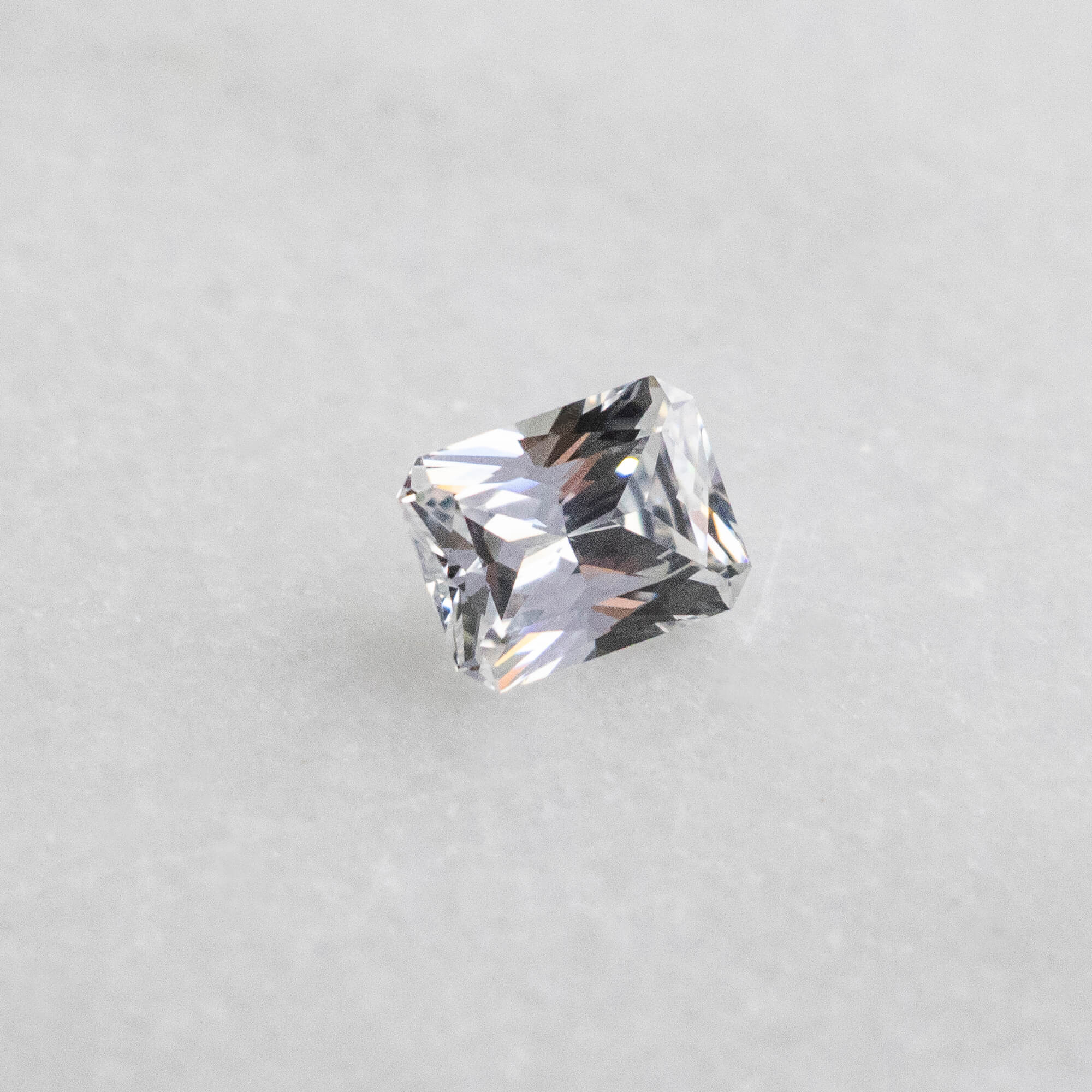
Radiant
As the name suggests, this shape is extremely sparkly. A Radiant shape has the appearance of a rectangle but its facet pattern is much different than an Emerald. Radiant cut diamond features a shocking 70 facets, which is much higher than most other shapes. This gives it all-over sparkle, much like a Round cut diamond, but even more captivating. Due to its many facets, it’s important to choose an Ideal or Very Good cut when purchasing a traditional radiant cut diamond as inclusions will be easier to spot.

Round
Round diamonds are the most popular of all stone shapes. As the name suggests, this cut appears as a perfect circle. The round cut is so popular that more than half of all diamonds sold are cut into a Round Brilliant shape. This is because they feature an Ideal facet pattern which results in the maximum amount of light return. That means more sparkle for your buck. Plus, the shape in itself is classic enough to pair well with any setting or detail you choose. A Round Brilliant stone is an excellent choice for anyone looking for a timeless piece that has exquisite brilliance and fire.

Trillion
Although the Trillion looks like a triangle in shape, it features rounded corners which give it a unique look. This shape is striking as side stones, but is not commonly featured as a center stone. Due to this, Trillion shapes are more popular in fine jewelry. Since the Trillion shape is asymmetrical, it is designed with special prongs- like a martini setting- to fit properly. Keep in mind, because this shape comes to three points it is more prone to chipping. This is why you’ll want to make sure you choose a secure setting if you end up choosing a Trillion shape.
The Meaning Behind Different Diamond Shapes
Many consumers wonder, “what do different diamond shapes mean?” While some shapes are said to have symbolism, it’s more important to consider what different diamond shapes mean to you and your significant other. Whether it’s a story of your history or a brief look into the future, a shape can hold unique meaning in your heart forever.

Some suggest that the traditional Round Brilliant shape is perfect for a woman who has classic taste. She may be allured by timeless adornments hoping to pass them down to the next generation, or enthralled by repetitive patterns. It may even suggest everlasting love, destined to go on forever with no end in sight as a circle suggests. Opposingly, an Emerald cut diamond is said to allude to the dazzle of the 1920s: bright, flashy and new. Perhaps you want your relationship to always feel unique and fresh, just like a step-cut suggests.
Choosing Diamond Shape
Now that you know about the most popular diamond shapes, you can choose the perfect one for your next adornment. Whether it’s a prized possession like an engagement ring or a sentimental gift like a pair of earrings, the shape of the stone will complete the piece perfectly.

After you decide on the best diamond shape for you, it’s time to decide on the right stone. There are a plethora of affordable stone options on the market today. No longer are mined diamonds necessary or practical. If you’re looking for jewelry that has the same chemical composition as a mined diamond, then a lab grown diamond may be the best option for you. They cost around 30-50% less than a mined diamond, but are identical in every single way. You may also want to consider a diamond simulant, such as the Nexus Diamond™ alternative. With an engagement ring from Diamond Nexus, you can get an Ideal Cut stone for up to 80% less than a mined diamond. Whichever stone you choose, now that you know which shape you’re looking for, you can be confident that your adornment will turn out perfectly!
*Diamond Nexus strives to provide valuable information, while being clear and honest about our products. The Nexus Diamond™ alternative is a patented lab created diamond simulant that, among all simulants, most closely imitates the look, weight and wear of a diamond, with two exceptions – it is absolutely perfect in every way, and it costs significantly less. Price points and environmental facts expressed in this blog were taken from popular online retailers and may vary. Learn more about the environmental impact of mining by visiting our blog.

